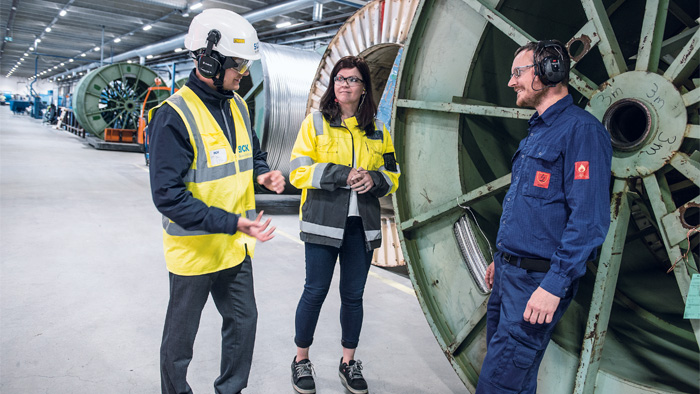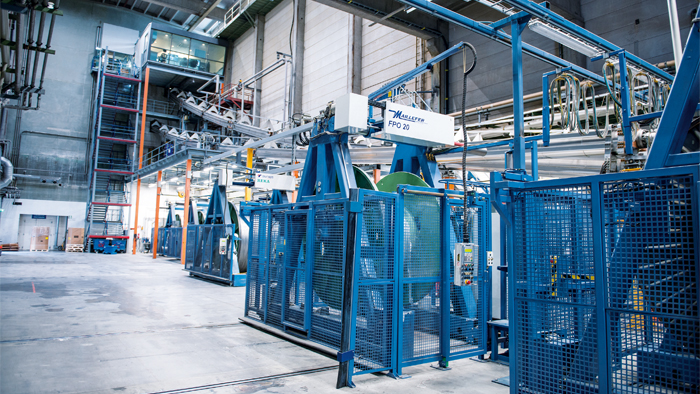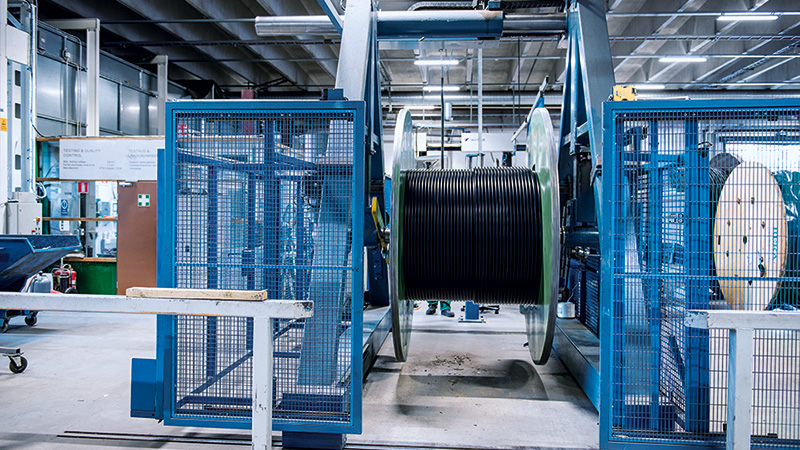SICK’s risk assessment increases safety and productivity for Finnish company’s cable production
What risk factors lurk behind a winding machine? SICK assisted Finnish family-owned company Reka Kaapeli Oy to help answer this question. At the end of the assessment, they decided to equip their machine with state-of-the-art protective devices. Not only did this mitigate risk, but it boosted productivity.
Reka Kaapeli Oy is a Finnish family-owned company with a history dating back to the 19th century. With a product range that extends from installation and instrumentation cables to medium and high voltage lines, it is the largest Finnish-owned cable manufacturer.
Safety and responsibility
Reka Kaapeli is conscious of its corporate responsibility in many areas. With a certified quality management system, in-house testing equipment and a testing laboratory, they’ve built a strong foundation to meet the highest possible quality requirements. This is important, as a certified occupational health and safety management system ensures a safe workplace. They also regularly conduct risk assessments in all production plants and departments of the company.
“Safety is a fundamental requirement for us and always one of the first topics discussed in our morning meetings, with the ongoing development and improvement of all safety initiatives firmly on the agenda. Hazardous situation reports are an established practice whenever risks arise. An important element of our safety measures is to discuss, examine, and identify possible risk factors,” said a company representative.

Safety assessment of the winding machine by SICK
Safety training and assessments for machines are part of the advisory services provided by SICK. Data collected by an external service provider supplemented the information obtained by the customer in an internal audit. The SICK experts offer their assistance not only with their comprehensive experience, but also up-to-date technical knowledge of the available safety devices and technologies on the market.
Individual risk assessments for efficient safety solutions
The process at Reka Kaapeli was initiated by PJ Control Oy, a sales partner and supplier of technical solutions. PJC implements a variety of automation projects on behalf of Reka Kaapeli, which includes sourcing the associated components. SICK is the primary partner of PJC in the core area of safety.
“In the spring of last year, we conducted a half-day information session for Reka Kaapeli on the topic of safety,” said Ville Kolehmainen, Head of Sales at PJ Control Oy. “We evaluated the most critical areas of production with regards to safety and then suggested a safety assessment by SICK.”
“That is why we then commissioned a safety assessment for our machines by SICK,” said Teemu Koskelin, a specialized technician at Reka Kaapeli.
The investigation was needs-oriented and the specialist from SICK understood exactly how our machines work and the risks associated with their operation. These risks were predominantly related to crushing, entanglement and cutting from moving parts. We received a very informative report, a comprehensive analysis, and recommendations for the necessary additional safety devices from SICK. The clear SCRAM matrix in SICK’s report uniquely identifies the various safety-related sub-factors, for example, the probability of occurrence of a hazardous event, the severity of the potential damage resulting from the hazard, and the level of hazard exposure.

Increased safety and productivity in cable production
Reka Kaapeli’s winding machine is employed in a five-shift operation, as the majority of their deliveries pass through the winding process. But the old safety guards were not particularly functional and made it harder to use the equipment.
According to Koskelin, the safety devices make it easier to move around in the vicinity of the machine, simplify the loading and unloading processes, and increase the speed of the overall production facility.
“A winding operation normally takes 10-30 minutes, with 20-30 spools being wound per shift. There are therefore a lot of changeovers, and it is essential for productivity that these run smoothly,” Koskelin said. “Thanks to the new technology, the equipment is a lot safer now than before while also achieving significantly higher productivity.”
Want to learn more about solutions for increased safety and productivity?





